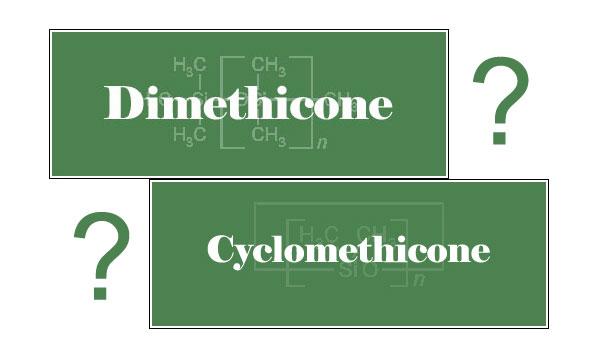


acrylates/bis-hydroxypropyl dimethicone crosspolymer
behenyl dimethicone/bis-vinyldimethicone crosspolymer
bis-phenylisopropyl phenylisopropyl dimethicone/vinyl dimethicone crosspolymer
bis-vinyldimethicone/bis-isobutyl PPG-20 crosspolymer
bis-vinyldimethicone crosspolymer
bis-vinyldimethicone/ PEG-10 dimethicone crosspolymer
bis-vinyldimethicone/PPG-20 crosspolymer
butyldimethicone methacrylate/methyl methacrylate crosspolymer
C30-45 alkyl cetearyl dimethicone crosspolymer
C4-24 alkyl dimethicone/divinyldimethicone crosspolymer
C30-45 alkyl dimethicone/polycyclohexene oxide crosspolymer
cetearyl dimethicone crosspolymer
cetearyl dimethicone/vinyl dimethicone crosspolymer
cetyl dimethicone/bis-vinyldimethicone crosspolymer
cetyl hexacosyl dimethicone/bis-vinyl dimethicone crosspolymer
crotonic acid/vinyl C8-12 isoalkyl esters/VA/bis-vinyldimethicone crosspolymer
dimethicone/bis-isobutyl PPG-20 crosspolymer
dimethicone/bis-vinyldimethicone/silsesquioxane crosspolymer
dimethicone crosspolymer
dimethicone crosspolymer-3
dimethicone/divinyldimethicone/silsesquioxane crosspolymer
dimethicone/lauryl dimethicone/bis-vinyldimethicone crosspolymer
dimethicone/PEG-10 crosspolymer
dimethicone/PEG-10/15 crosspolymer
dimethicone/PEG-15 crosspolymer
dimethicone/phenyl vinyl dimethicone crosspolymer
dimethicone/polyglycerin-3 crosspolymer
dimethicone/PPG-20 crosspolymer
dimethicone/titanate crosspolymer
dimethicone/vinyl dimethicone crosspolymer
dimethicone/vinyltrimethylsiloxysilicate crosspolymer
diphenyl dimethicone crosspolymer
diphenyl dimethicone/vinyl diphenyl dimethicone/silsesquioxane crosspolymer
divinyldimethicone/dimethicone crosspolymer
hydroxypropyl dimethicone/polysorbate 20 crosspolymer
isopropyl titanium triisostearate/triethoxysilylethyl polydimethylsiloxyethyl dimethicone crosspolymer
lauryl dimethicone PEG-15 crosspolymer
lauryl dimethicone/polyglycerin-3 crosspolymer
lauryl polydimethylsiloxyethyl dimethicone/bis-vinyldimethicone crosspolymer
PEG-10 dimethicone crosspolymer
PEG-12 dimethicone crosspolymer
PEG-8 dimethicone/polysorbate 20 crosspolymer
PEG-12 dimethicone/bis-isobutyl PPG-20 crosspolymer
PEG-12 dimethicone/PPG-20 crosspolymer
PEG-10 dimethicone/vinyl dimethicone crosspolymer
PEG-10/lauryl dimethicone crosspolymer
PEG-15/lauryl dimethicone crosspolymer
PEG-15/lauryl polydimethylsiloxyethyl dimethicone crosspolymer
perfluorononyl dimethicone/methicone/amodimethicone crosspolymer
polydimethylsiloxyethyl dimethicone/bis-vinyldimethicone crosspolymer
polyglyceryl-3/lauryl polydimethylsiloxyethyl dimethicone crosspolymer
silicone quaternium-16/glycidoxy dimethicone crosspolymer
styrene/acrylates/dimethicone acrylate crosspolymer
trifluoropropyl dimethicone/PEG-10 crosspolymer
trifluoropropyl dimethicone/trifluoropropyl 2 divinyldimethicone crosspolymer
trifluoropropyl dimethicone/vinyl trifluoropropyl crosspolymer
vinyl dimethicone/methicone silsesquioxane crosspolymer
vinyldimethyl/trimethylsiloxysilicate/ dimethicone crosspolymer
vinyldimethyl/trimethylsiloxysilicate stearyl dimethicone crosspolymer
dimethicone/silsesquioxane crosspolymer
trimethylsiloxysilicate/dimethicone crosspolymer
vinyl dimethicone/lauryl/behenyl dimethicone crosspolymer
vinyl dimethicone/lauryl dimethicone

Most readers know I am often nonplussed by cosmetics claims. So many of them are just ludicrious with their claims that I simply shake my head in amazement that they can actually be advertised.
I spend a lot of my time talking about the difference between marketing and facts when it comes to cosmetics products.
So when I actually stumbled upon a cosmetic product that lives up to its claims, I am so excited I want to tell everyone about it. Fortunately, I have this platform to do so.
I was recently making a personal appearance in Ottawa, and during a small break, I wandered around the store looking at the various cosmetics products on the shelf. It's actually my favourite past time.
A curious item struck my interest and I found myself circling back to it several times. Eventually I asked one of the sales associates, "Does this really work?"
Every single member of the staff raved about the prodct—they all own one and every one of them said I had to buy it. It is not often I get an entire sales team with such excitement.
While Razor Pit is marketed to men, it certainly can be used by anyone who owns a razor. Anyone shaving any part of their body really should go out and buy one of these right now.
I bought one and have been using it for the past three weeks—usually I would have replaced the blade on my razor three times, and yet I am still using the same razor blade shave after shave. No razor burn, no irritation, no ingrowns . . . nothing. Every time I use the Razor Pit, it is like using a fresh blade on my face. And it takes literally 10 seconds to use, so really no extra time required on my morning ritual.
Razor Pit ($35 one time purchase)
Razor Pit calls itself a blade sharpener, but it is actually a blade cleaner. The reality is razor blades actually do not become dull after a few uses, rather they become coated with microscopic skin, hair, and debris, which prevents the blade from actually connecting with the area being shaved. So with each use of the blade it becomes more difficult to get a close and irritation-free shave. The problem is that these particles are so small, simply rinsing the blade will not remove them. Barbers know this and that is why they always prep a blade before use (a barber uses a wide peice of leather called a strop)—they are not actually sharpening their blades, but rather cleaning them so the already fine blade will connect smoothly with the surface of the skin.
Razor Pit actually removes the particles so the blades themselves can do the very job for which they were intended.
Pros:
1. A one time purchase. It retails for about the cost of a 10-pack of razor blades.
2. Increases the use of a single razor blade to 150 shaves—that is about 5 months of daily shaving! (I have been using the same blade now for 21 days. I will let you know when it actually dies. Usually I replace my blade every 5 days.)
3. Stores razor so no extra space needed in the bathroom.
4. Takes only seconds to use each day (less than 10 to be exact).
5. Works with all razor blades.
Cons:
1. Storage space does not fit all size razors.
2. When wet it is very slippery, so it cannot be stored in the shower (I shave in the shower, so this kind of annoyed me).

Overall:
This product is absolutely a money saving cosmetic accessory. For about the price of a pack of blades this product will end up saving its user hundreds of dollars per year.
Here's the math for me:
$29.99 for a 10 pack of blades, each blade lasts 5 days=$224.93 per year in blades.
Razor Pit $35, extended the life of a single blade by a factor of over 4 (and that is just so far). Even if I changed my blade today I would still save $168.70 this year. If the product actually does increase each blade to 150 uses (as advertised), I will save $215.93 in the next year.
Any way you do the math, this product is worth the buy.
Check out these other Beauty: Busted! Reviews for Mac Cleanse Off Oil and Ombrelle Sunscreen.

The cosmetics industry is very good at convincing consumers that marketing language is indeed fact. The level of misleading claims is staggering. When I review products one of my criteria is if the product can deliver on the marketing claims. Seldom do product deliver on their implied claims.
Here are the five most common marketing claims that simply cannot live up to their impressions.
1. All-Natural
This claim means absolutely nothing as everything in the biosphere is "natural." The misleading implication is that the product is somehow organic, green or some other variation of these themes. Reality is the term "all-natural" has no regulation and since all ingredients are found in nature technically this label can be applied to any cosmetic product. Marketers know that "natural" is always associated with "safer" yet the terminology simply means that the formula contains ingredients which appear in nature. All ingredients appear in nature — safety is another issue altogether.

2. Chemical-Free
This is just plain wrong. Everything used in a cosmetic is a chemical. Water is a chemical. It is simply impossible to create a cosmetic product without using chemicals to do so. This claim is also used to denote safety but it is simply just plain incorrect.
3. Hypoallergenic
This is a made up word that has no medical meaning. It does not denote any special testing or formulating in any way. In 1975 the FDA tried to regulate the word and create an industry standard for its application to cosmetics. However, the Estee Lauder corporation was successful is challenging this in court. To this day the word has no real meaning when applied to cosmetics. Any cosmetic can be labelled hypoallergenic. This is misleading because consumers have been convinced hypoallergenic products are more gentle and less likely to trigger a reaction. Products labelled hypoallergenic are in no way more gentle or less likely to trigger an allergy than a product which is not labelled hypoallergenic.

4. Patented Product
Cosmetics companies love to list patents to describe their products. Consumers are convinced patented means the formula has been proven to work as described. However, a patent is relatively easy to grant based on some very minimal criteria. Patents do not prove, in any way, the product actually performs as described. In fact, to gain a patent a product does not even have to prove it works at all. It simply has to prove it is presenting its use in a unique fashion. Guess, for what, the majority of cosmetics patents are granted — packaging design. Packaging has absolutely nothing to do with the efficacy of a formula. One step worse is "patent pending" this means that the company has filed for a patent but one may never even be issued.
5. Reduces the Appearances of Wrinkles
Every anti-ageing product carries this claim. The words imply something that is simply not biologically possible. This misleads consumers to think the product can remove a wrinkle or reverse the ageing process. It simply is not possible. The word "appearance" is the caveat here. By including this word marketers get off the hook for any product that does not remove a wrinkle. The appearance of a wrinkle can simply be diminished through moisturization. All moisturizers reduce the appearance of wrinkles — but guess what — after 12 hours the wrinkles reappear as the moisturizer stops working.

Why to see other beauty BUSTED? Find out if Bio Oil is effective or just a scam and see my top picks in sunscreen.